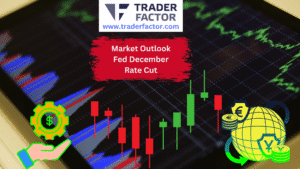Today marks a significant moment for global financial markets as major economies release their Flash Purchasing Managers Index (PMI) data. Investors and traders are closely monitoring these figures from France, Germany, the Eurozone, and the United States because they provide the earliest reliable snapshot of economic health for the current month.
This data is particularly crucial for the forex market, where currency valuations often pivot rapidly based on the comparative strength of manufacturing and services sectors.
Understanding these metrics allows market participants to gauge potential shifts in monetary policy and economic momentum, making today’s release a pivotal event for strategic decision-making in currency trading.
Table of Contents
ToggleThe Strategic Importance of Flash PMI Data
Deciphering Economic Health Through Leading Indicators
The Purchasing Managers Index serves as a vital leading indicator for economists and traders who need to understand the current trajectory of business conditions. Unlike GDP figures which look backward, PMI data offers a forward-looking view by surveying private sector companies about their monthly activities. These surveys cover essential variables such as new orders, inventory levels, production output, supplier deliveries, and employment figures.
Consequently, a reading above 50 generally signals economic expansion, while a figure below 50 indicates contraction. Traders rely heavily on these specific thresholds to determine whether an economy is heating up or cooling down, which directly influences their outlook on interest rates and central bank policies.
Immediate Currency Reactions to Data Releases
Currency markets react almost instantaneously to Flash PMI releases because they frequently diverge from consensus forecasts. When a country reports stronger-than-expected manufacturing or services data, its currency typically appreciates as investors anticipate robust economic growth and potentially tighter monetary policy.
Conversely, disappointing figures can trigger immediate sell-offs as market sentiment shifts toward caution or recessionary fears. Therefore, the volatility surrounding these releases creates both opportunities and risks for forex traders who must interpret the data quickly. This immediate price action highlights why the Flash PMI is considered one of the most market-moving economic indicators available to the financial community today.
Analyzing the Impact on Major Pairs and Commodities
The Effect on the US Dollar and Sterling
The release of Flash Manufacturing PMI data has a profound and direct influence on major currency pairs involving the US Dollar and the British Pound. A robust report from the United States often strengthens the Greenback as it suggests the economy can withstand higher interest rates for a longer period. Similarly, positive data from the UK can bolster the Sterling against its peers.
However, if the data reveals weakness in the manufacturing sector, traders might sell the currency in anticipation of a dovish pivot from the respective central bank. This dynamic relationship means that even slight deviations from expected figures can lead to significant percentage moves in pairs like GBP/USD or EUR/USD within minutes of the announcement.
Implications for Gold and Safe-Haven Assets
Beyond currency pairs, PMI reports significantly influence commodities such as gold, which often acts as a counter-balance to economic sentiment. Positive economic data typically reduces the appeal of safe-haven assets because investors feel more confident seeking higher yields in riskier markets like equities or currencies.
On the other hand, if PMI figures suggest a contracting economy, the fear of a slowdown can drive capital toward gold, pushing its price higher. Therefore, traders who focus on commodities watch these reports just as closely as forex traders, using the data to adjust their positions based on the shifting landscape of global economic risk and stability.
Understanding the Flash PMI Methodology
Comparing Flash Estimates Versus Final Reports
It is important for market participants to distinguish between the Flash PMI and the final PMI figures that are released later in the cycle. The Flash PMI is a preliminary estimate based on approximately 85% to 90% of total survey responses, making it an early and highly influential signal. Because it arrives weeks before official government data, it provides the first real look at the economic trends of the month.
Although the final report might include slight revisions, the Flash version captures the bulk of market attention due to its timeliness. This speed allows traders to adjust their strategies proactively rather than reactively, providing a distinct advantage in fast-moving markets.
How Surveys Are Conducted and Weighted
The calculation of the Purchasing Managers Index involves a rigorous methodology designed to ensure accuracy and relevance across different sectors. Surveys are sent to purchasing executives in hundreds of companies, asking them to rate business conditions compared to the previous month. These responses are then weighted according to the size and contribution of each industry to the overall economy.
This structured approach ensures that the final index number accurately reflects the broader economic reality. By aggregating data on variables like employment and new export orders, the index provides a comprehensive composite score that analysts use to forecast broader macroeconomic trends such as inflation and GDP growth.
Conclusion
Today’s Flash Manufacturing and Services PMI reports provide essential clarity for traders navigating the uncertainties of the current global economic environment. By analyzing these leading indicators, market participants can better anticipate currency fluctuations and adjust their portfolios to manage risk effectively.
As the data digests, the forex market will likely continue to see volatility, presenting strategic opportunities for those who understand the underlying economic signals.
Disclaimer:
All information has been prepared by TraderFactor or partners. The information does not contain a record of TraderFactor or partner’s prices or an offer of or solicitation for a transaction in any financial instrument. No representation or warranty is given as to the accuracy or completeness of this information. Any material provided does not have regard to the specific investment objective and financial situation of any person who may read it. Past performance is not a reliable indicator of future performance.


















